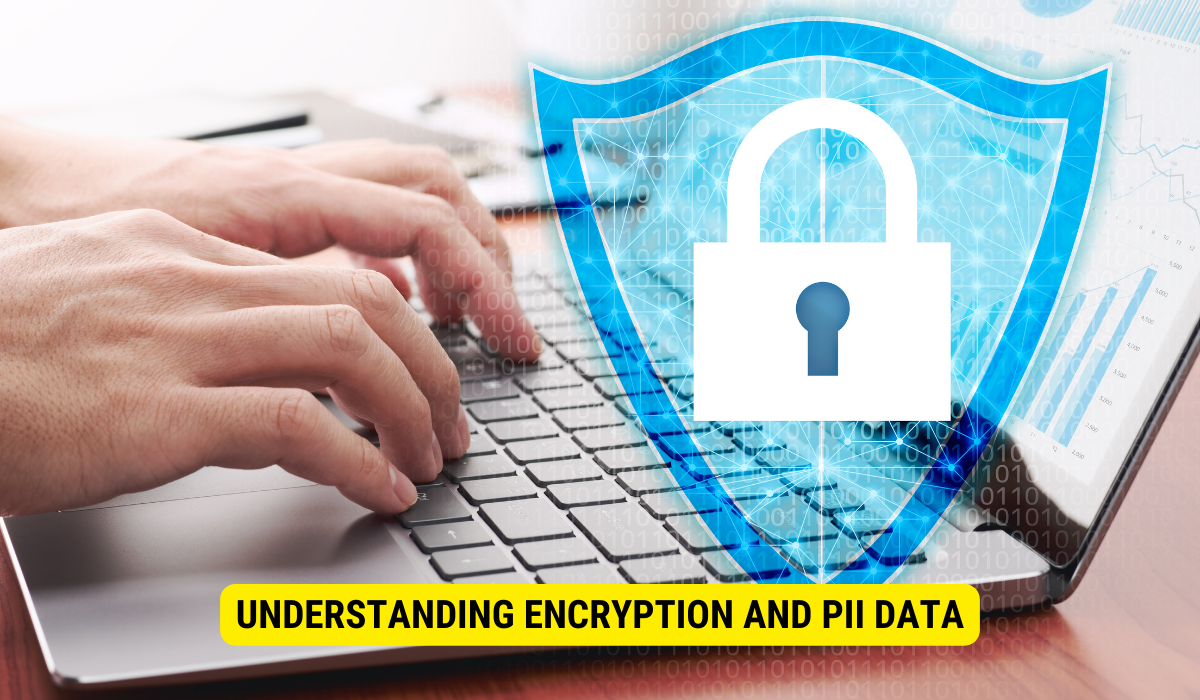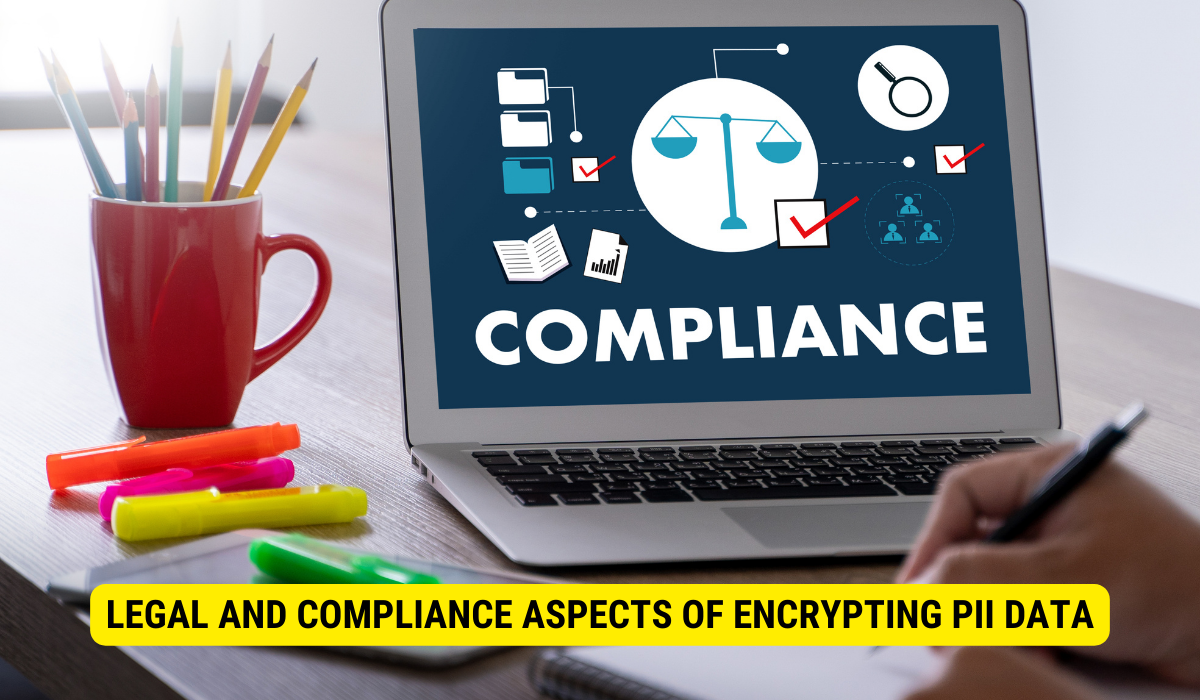Yes, encryption affects PII data by transforming it into unreadable ciphertext, ensuring its confidentiality and security.
In today’s digital age, where information breaches and cyber threats are on the rise, protecting personally identifiable information (PII) has become a paramount concern. One effective method for safeguarding PII is encryption. By encoding sensitive data, encryption prevents unauthorized access and ensures confidentiality. However, it is crucial to understand the fundamentals of encryption, its role in protecting PII, its impact on data accessibility, and the different encryption methods available.
Understanding Encryption and PII Data
Encryption is a fundamental concept in the world of cybersecurity. It plays a crucial role in protecting sensitive information and safeguarding the privacy and security of individuals. This article will delve deeper into encryption and its significance in safeguarding personally identifiable information (PII) data.
Defining Encryption
Encryption is a process that involves transforming readable data into an incomprehensible form, known as ciphertext. This transformation is achieved through the use of encryption algorithms and encryption keys. The purpose of encryption is to make the information unreadable to unauthorized parties, ensuring that only individuals with the corresponding decryption keys can access and decipher the original data.
Encryption algorithms are complex mathematical formulas designed to scramble the data in a virtually impossible way to reverse without the correct decryption keys. These algorithms use various techniques, such as substitution, permutation, and bitwise operations, to ensure the confidentiality and integrity of the encrypted data.
Encryption keys are a crucial component of the encryption process. They are unique codes or passwords that are used to encrypt and decrypt the data. Decrypting the ciphertext and retrieving the original information is practically impossible without the correct encryption keys.
There are two main types of encryption such as symmetric encryption and asymmetric encryption. Symmetric encryption uses the similar key for both encryption and decryption, while asymmetric encryption uses a pair of keys – a free key for encryption and a private key for decryption.
What is PII Data?
Personally identifiable information, usually referred to as PII, covers any data that can be used to identify an individual. This includes but is not limited to names, social security numbers, email addresses, phone numbers, and financial account details. PII data is highly sensitive and valuable to cybercriminals, as it can be exploited for identity theft, fraud, and other malicious activities.
Protecting PII data is of utmost importance in today’s digital age. Organizations and individuals must take necessary precautions to defense this information and prevent unauthorized access or disclosure. Encryption plays a vital role in protecting PII data by ensuring that it remains unreadable and unusable even if it falls into the incorrect hands.
Encryption provides an extra layer of safety for PII data, making it significantly more challenging for cybercriminals to access and exploit the information. By encrypting PII data, organizations can mitigate the dangers associated with data breaches and unauthorized access, thereby safeguarding the privacy and trust of their customers.
In conclusion, encryption is a critical tool in the fight against data breaches and identity theft. It is essential to any comprehensive cybersecurity strategy, particularly when protecting personally identifiable information. By understanding encryption and its role in securing PII data, individuals and organizations can take proactive actions to ensure the privacy and security of sensitive information.
The Role of Encryption in Protecting PII Data
Encryption is crucial in safeguarding Personally Identifiable Information (PII) data. It is a robust defense against unauthorized access, ensuring that sensitive information remains secure. But how exactly does encryption work to protect data? Let’s dive deeper into the mechanics of encryption and its importance in securing PII data.
How Encryption Works to Secure Data?
Encryption is a process that transforms plain text into an unreadable format called ciphertext. This conversion is achieved using an encryption algorithm and a unique encryption key. When PII data is encrypted, it becomes virtually impossible for unauthorized individuals to decipher the information without the corresponding decryption key.
Imagine a situation where a hacker manages to breach a system and gain access to encrypted PII data. Even though they have obtained the data, it remains useless to them. The stolen information is encrypted, making it incredibly challenging to extract meaningful insights or exploit the data for malicious purposes.
Only individuals or entities with the correct decryption keys can reverse the encryption process and transform the ciphertext into its original readable format. This safeguards that only authorized parties can access and interpret the sensitive PII data, providing additional protection.
The Importance of Encryption for PII Data
When it comes to protecting PII data, the stakes are high. Personal information, such as social security numbers, addresses, and financial details, is highly sought after by cybercriminals. Encryption is vital in mitigating the risks associated with data breaches and unauthorized access.
Organizations can comply with privacy laws and regulations requiring personal information protection by encrypting PII data. Encryption provides the necessary security controls to ensure that sensitive data remains confidential and inaccessible to unauthorized individuals.
Furthermore, encrypting PII data adds an extra layer of protection, reducing the risk of it falling into the wrong hands. In the event of a data breach, the encrypted information remains secure, minimizing potential liabilities for organizations and protecting the privacy and trust of individuals.
In assumption, encryption is a critical component in protecting PII data. Its ability to transform sensitive information into an unreadable format ensures that the stolen data remains useless to unauthorized individuals even if a breach occurs. By implementing encryption measures, organizations can enhance their data security, comply with regulations, and safeguard the privacy of individuals.
The Impact of Encryption on PII Data Accessibility
Encryption is crucial in enhancing Personally Identifiable Information (PII) data security. By converting sensitive information into an unreadable format, encoding ensures that even if unauthorized individuals gain access to the information, they cannot decipher its contents. However, while encryption provides a strong layer of protection, it also introduces challenges regarding data accessibility.
Accessibility of Encrypted Data
Once data is encrypted, authorized parties can only access and decrypt it with the correct encryption keys. This means that individuals or departments within an organization who need to utilize or share the encrypted PII data may face complexities. They must have the necessary authorization and possess the correct encryption keys to access and decrypt the information.
For example, consider a scenario where a marketing team needs access to encrypted customer data to analyze trends and develop targeted campaigns. They could not decrypt the data without the appropriate encryption keys and gain valuable insights. This highlights the importance of managing encryption keys effectively and ensuring authorized users have the necessary access to perform their tasks.
Balancing Security and Accessibility
Striking a balance between data security and accessibility is crucial for organizations. While it is essential to protect PII data through encryption, it is equally important to ensure that authorized users can access and utilize the encrypted information effectively.
To achieve this balance, organizations must carefully design their encryption strategies. This involves implementing robust access controls restricting data access to authorized individuals or departments. By defining clear roles and permissions, organizations can ensure that only those with a legitimate need can access the encrypted PII data.
In addition to access controls, securely managing encryption keys is paramount. Encryption keys are the foundation of data protection, and their compromise could lead to unauthorized access. Organizations should employ strong key management practices, such as regularly rotating encryption keys, storing them in secure locations, and implementing multi-factor authentication for key access.
Furthermore, establishing proper protocols for sharing and utilizing encrypted PII data is essential. Organizations should define clear guidelines and procedures for authorized users to follow when accessing or sharing encrypted data. This ensures that data remains secure during transmission and that proper encryption practices are followed.
In conclusion, while encryption enhances the security of PII data, it also introduces challenges regarding accessibility. Organizations must carefully design their encryption strategies, implement robust access controls, securely manage encryption keys, and establish proper protocols for sharing and utilizing encrypted PII data. By striking the right balance between security and accessibility, organizations can protect sensitive information while enabling authorized users to effectively utilize encrypted data.
Evaluating Different Encryption Methods for PII Data
Symmetric Encryption
Symmetric encryption, also known as secret key encryption, utilizes a single encryption key for encryption and decryption processes. This fast and efficient encryption method makes it suitable for securing large amounts of PII data. However, symmetric encryption requires a secure key management system to protect the encryption keys.
Asymmetric Encryption
Asymmetric encryption, also called public key encoding, employs a pair of mathematically related keys: a community key for encoding and a private key for decryption. This method enhances security by eliminating the need to share the private decryption key. Asymmetric encryption is commonly used for secure communication, such as encrypting emails or authenticating digital signatures.
Legal and Compliance Aspects of Encrypting PII Data
Data Protection Laws and Regulations
Encrypting PII data is not solely a matter of best practice; it is often a legal requirement. Many jurisdictions have data shield laws and regulations that mandate organizations to implement encryption and other security measures to protect PII. Failure to comply with these obligations can outcome in severe penalties and reputational damage.
Compliance Challenges with Encryption
While encryption is crucial for compliance, organizations may face challenges aligning their encryption practices with regulatory requirements. These challenges include managing encryption keys effectively, securely storing encrypted data, and ensuring that encryption algorithms comply with relevant standards. Organizations must proactively address these challenges to maintain compliance and protect PII data.
Key Takeaways:
- Encryption is a fundamental cybersecurity tool that converts readable data into ciphertext, making it incomprehensible without the correct decryption keys.
- Personally identifiable information (PII) includes data that can identify individuals, such as names, social security numbers, and financial details.
- Encryption plays a vital role in safeguarding PII data, preventing unauthorized access and protecting sensitive information from cybercriminals.
- While encryption enhances data security, it can impact data accessibility, requiring proper management of encryption keys and access controls.
- Different encryption methods, such as symmetric and asymmetric encryption, offer varying levels of security and usability for PII data protection.
- Legal and compliance aspects require organizations to implement encryption measures to protect PII data and adhere to data protection laws and regulations.
FAQs:
Q1: What is encryption?
A1: Encryption is a process that transforms readable data into unreadable ciphertext using encryption algorithms and keys, ensuring data confidentiality and security.
Q2: What is PII data?
A2: Personally identifiable information (PII) includes data that can be used to identify individuals, such as names, social security numbers, and financial details.
Q3: How does encryption impact PII data?
A3: Encryption protects PII data by making it unreadable to unauthorized parties, enhancing data security. However, it can also affect data accessibility, requiring proper encryption key management and access controls.
Q4: What are the different encryption methods for PII data?
A4: Two common encryption methods are symmetric encryption (using a single key) and asymmetric encryption (using a pair of keys). Each method offers varying levels of security and usability for protecting PII data.
Q5: Are there legal requirements for encrypting PII data?
A5: Yes, many jurisdictions have data protection laws and regulations that mandate organizations to implement encryption and other security measures to protect PII data. Non-compliance can lead to penalties and reputational damage.
Conclusion
In conclusion, encryption plays a vigorous role in safeguarding PII data. It ensures the confidentiality of sensitive information, mitigates the danger of data breaches and helps organizations comply with legal and regulatory obligations. Nevertheless, encryption impacts data accessibility, necessitating a careful balance between security and usability. Organizations can effectively protect PII data and build trust with stakeholders by evaluating different encryption methods and understanding the legal and compliance aspects.
